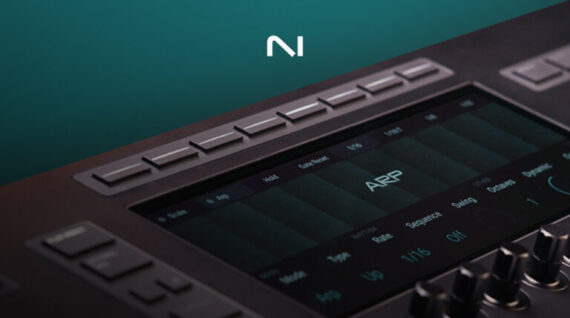Teenage Engineering EP-133 K.O. II Gets Major Update

Teenage Engineering has announced the first major OS update for its EP-133 K.O. II sampler, released in 2023. The free update bringing resampling, song mode, sidechaining and increased polyphony to the instrument.
Dubbed the “Champions” update, OS 2.0 significantly expands the capabilities of the K.O. II with some commonly requested features that’ll undoubtedly put a smile on the face of this calculator-esque sampler’s fans. First up, we have expanded polyphony: EP-133 can now handle 16 mono and 12 stereo voices, a healthy increase from the 12 mono and six stereo voices it offered on launch.
EP-133’s new resampling function lets you record stacks of multiple samples with effects into a new sample, opening up a host of creative possibilities for reimagining existing patterns and making it possible to free up space for additional tracks and effects by bouncing down multiple tracks into one. Now, you’re also able to sample hands-free.
OS 2.0 also brings with it Song Mode, a feature that allows you to chain multiple scenes together to craft structured arrangements. 99 unique song positions can be stored, each made up of scenes containing multiple patterns of up to 99 bars. Teenage Engineering points out that this means you’re now able to create a song that’s up to 9,801 bars in length, making EP-133 a more useful tool for extended live performances.
Good news for fans of pumping techno, as EP-133 now offers MIDI sidechaining, meaning that you’re now able to use kick drums to trigger ducking on bass sounds to create a cohesive low-end with no hassle. The length and shape of the volume ducking can be tweaked as well.
Here’s the official video intro:
That’s not all: OS 2.0 brings MIDI Thru support, so the sampler can now pass MIDI information on to other machines in your set-up, along with a host of other MIDI improvements that’ll make it easier to hook up EP-133 with other instruments and gear.

New in K.O. II version 2.0:
- Resampling: Stack effects, make a beat from a beat or combine samples, all using the new resampler.
- Song mode: Song mode lets you chain scenes together to make complete compositions.
- Hands-Free Sampling: Sometimes you need both hands to play an instrument, and you want to sample it. Just hit shift and hold a pad, and the K.O. II will do the rest.
- MIDI side-chaining: Sidechain will duck the volume of the bass when the kick comes in
- Increased polyphony: The K.O. II goes from 12 mono/6 stereo sounds to up to 16 mono and 12 stereo sounds.
- Larger note intervals: The K.O. II now supports 1/1, 1/2 and 1/4 timing intervals.
- MIDI Through: The K.O. II now supports MIDI Through, so it can pass notes along to other machines.
To download the update and for details, visit Teenage Engineering site.




